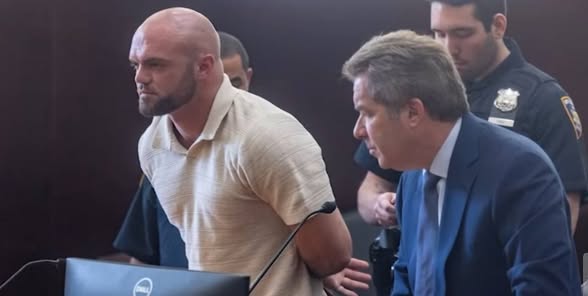-
On October 30, 2024, Mascia reported he had been shot in the leg while parked on the shoulder of the Southern State Parkway westbound in Nassau County, Long Island. He claimed an unknown driver shot him during a traffic-stop encounter. CBS News+3New York State Police+3WSLS+3
-
Investigators determined that he had staged the incident: he traveled to a park (Hempstead Lake State Park), shot himself in the leg with a .22-caliber rifle, stashed the rifle, then returned to the highway shoulder and reported the shooting. He also scattered shell casings to fabricate the scene. CBS News+2New York State Police+2
-
A large-scale manhunt and law-enforcement response ensued based on the false claim of a “dark-skinned” shooter fleeing in a car with temporary New Jersey plates. WSLS+2The Independent+2
-
In January 2025, Mascia resigned from the State Police while under investigation. New York State Police
🧾 Legal outcome
-
In May 2025, Mascia pleaded guilty to:
-
Falsely reporting an incident
-
Tampering with physical evidence
-
Official misconduct AP News+1
-
-
On October 22, 2025, he was sentenced in Nassau County Court to:
-
6 months in jail Norwalk Hour+2Encyclopedia Britannica+2
-
5 years of probation AP News+1
-
Restitution of nearly $290,000 to cover law-enforcement costs of the large manhunt. CBS News+1
-
Mandatory mental-health treatment as a condition of his probation. AP News+1
-
-
His parents (Thomas A. Mascia Sr. and Dorothy Mascia) also pleaded guilty to firearms-possession charges after an illegal weapon was found in their home; his father received probation, his mother a conditional discharge. Encyclopedia Britannica+1
⚠️ Key issues & implications
-
Abuse of public trust: As a law-enforcement officer, Mascia’s fabricated incident misused resources, triggered a manhunt, and undermined public confidence. The District Attorney called his actions “disgraceful”. The Washington Post+1
-
Mental-health questions: His attorney asserted Mascia had an undiagnosed mental-health condition that contributed to his behavior. CBS News+1
-
Costs and consequences: Beyond the jail time, the case illustrates the operational and financial burden false reports generate for law-enforcement agencies and taxpayers.
-
Accountability in policing: The case raises broader questions about screening, supervision, and responses when law-enforcement personnel engage in misconduct.

Leave a Reply